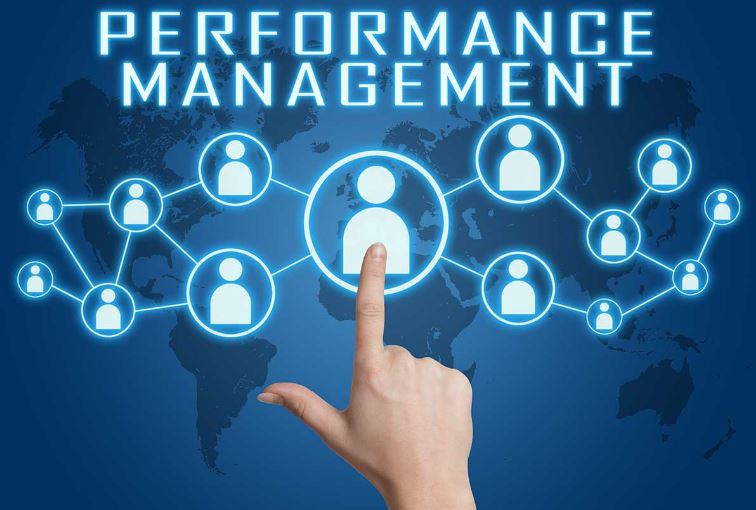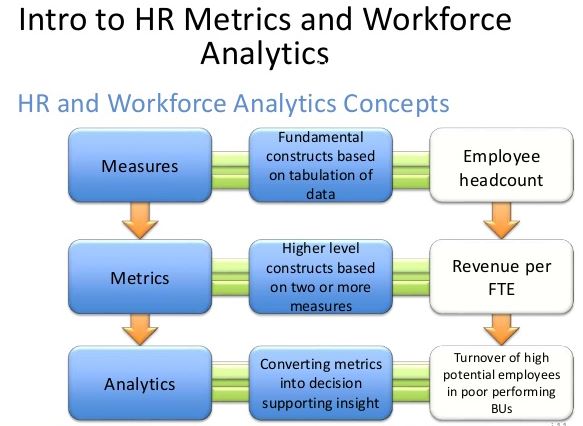Understanding Performance Management
Explain formal and informal performance management evaluation in the workplace
Performance Management – A mentor’s role is to guarantee that informal evaluations are conducted regularly in the course of their work relationship and that their employees’ progress can be tracked in real-time. This form of evaluation can be accomplished through job-related conversations, a casual get-together over coffee, or an on-site inspection of a particular piece of work. Employees can benefit from less formal assessments by gaining as much information as possible without causing delays or mistakes.
This increases their chances of changing their behaviour (Aboalshamat et al., 2020). It is possible to avoid such surprises since informal feeds to employees are noted in the official assessment. Formal assessments should never take the place of informal ones, even if the latter is more convenient.
As part of a worker’s yearly performance assessment, this is commonly used for more official discussions between a manager and an employee. Maintaining a fresh annual evaluation is a priority for me as a line manager. This form of evaluation focuses on the employee’s accomplishments as well as their efforts to correct any flaws they may have.
In performance management, explain the job of the first-line manager
It is the first-line manager’s responsibility to make sure that his team accomplishes its goals. A first-line manager is responsible for providing consistent direction to the members of his staff to ensure that his team performs properly and that its members comprehend both their individual and collective goals, as well as how they contribute to the advancement of the business.
When they see their employees succeed, they may promote their feedback and help guide their development (Phillips et al., 2016). As a new employee, you may support them by saying “up to date” to help them feel more confident in their role, or you can give them input or assign them tasks to help them rise to a specific position. As a manager, I believe that performance is just as important, whether it’s a simple “thank you” or a more formal thank you.
Identifying the fundamental reason for a team member’s noncompliance with requirements is critical. Everyone who is straining to deliver resources and equipment should report to you as their first-line manager.
Identify ways to ensure fair and objective formal assessment
To determine remuneration, incentive, promotion, and transfer choices, an assessment of employee performance is necessary. As a result, it has a profound effect on staff morale and motivation (Yu et al., 2020). But when it comes to making judgments on employee transfers, salary, advancement, and recognition, supervisors must use extreme caution. Employee morale suffers when they see their efforts and contributions go unnoticed. The approaches listed below allow managers to conduct performance reviews that are both fair and objective.
Fair Progress System
It is the primary objective of doing an employee evaluation to enhance the performance of the employee and to provide assistance to them. Identifying and correcting implementation hurdles is a joint responsibility of both management and staff ( Bozer et al., 2021). If employees aren’t included in the decision-making process, it might be unreasonable to expect them to return to high levels of performance.
Fair Performance Review
For the assessors to grasp the aims of performance evaluation, the organisation must train them. They should be aware of how the performance review system operates, be able to provide constructive comments and maintain a focus on capabilities and behaviour as opposed to personalities (Yu et al., 2020). When it comes to evaluating their performance, employees should be given the freedom to do so at will.
Fair Report
Even before conducting interviews, managers may reflect on what they’ve seen of their staff in the real world (Bozer et al., 2021). Because a superficial assessment of an employee’s performance cannot provide sufficient and correct information, the management should spend more time observing and recording data to get a more complete picture.
Fair Assessment
Each employee’s job description and how their performance is being evaluated should be clearly stated in an evaluation assessment. Employees and employers benefit from open communication when this type of information is shared.
Explain how to set SMART objectives for a team member
Goals that are measurable, attainable, relevant, and time-bound are referred to as SMART. An organization’s key success statistics, such as earnings, or the accomplishment of a specific objective are all examples of typical metrics (Jones, 2016).
Good public health practice involves solid objectives to assess improvement in the direction of reaching goals and results. Various programmes and services are supported by awards that involve planning, executing, and achieving goals to guarantee success for future funding. Organizations strive to set meaningful goals that effectively evaluate improvement in the direction of a goal.
- The aim must be explicit and not vague or nonspecific, e.g., safety
- To determine whether a project is a success, you must first determine whether it can be measured, e.g., patient care
- It must be possible to fulfil a goal with the money that is available, e.g., efficiency
- The goal or target specified is related to the organization’s objectives and will have an impact on the business, e.g., accuracy
- A date is required to compute the mission’s duration, e.g., learning and development
Explain how to set performance standards for a team member
Managers must keep tabs on and establish expectations for their workers’ performance to help them grow professionally. Both managers and team members should be involved in defining and setting performance criteria to guarantee that everyone is on the same page and ready to commit. There is a greater sense of accountability and incentive when employees have a say in determining their performance criteria.
Evaluation
It is of the utmost importance to analyse and revise the job requirements with the workforce and to discuss the kinds of objectives employees should set for themselves. The benchmark must be measurable so that managers can monitor and compare the performance of their employees over time. Comparing performance amongst employees in the same role is made easier when they are measured using metrics.
Past Data
Before setting new performance objectives, it is critical to undertake a thorough analysis of all available historical data on existing goals.
Keeping track of your progress
Make sure everyone knows what they’re expected to accomplish and how they can help the team achieve it. By the end of the month, for example, the salesman must raise sales by 15%.
Frequent Meetings and Open Debate
Regular meetings to discuss and execute new performance requirements should be held on a monthly or every six-week cycle, as appropriate. The end-of-month meeting at Milltech, for example, is used to discuss issues and areas that require development. Regular meetings allow team members to share their thoughts and suggestions for enhancing their work performance.
Explain how to measure performance against agreed standards
Continual Examination
Many businesses choose to conduct performance evaluations regularly rather than once every few months or once a year. As a result, regular feedback aids in the early detection of issues and the implementation of corrective measures before they worsen.
Checklist
With the use of a checklist, it is simple to track employee performance and identify those employees who are under-performing and may require more support. In addition, it aids in identifying people who require further education and training to perform at a higher level.
Self-Evaluation
To get the greatest results, you should ask your staff to do a self-assessment. Employees who are held accountable for their work may be more concerned about it than the team’s leaders. With the use of this exam, team leaders may help their employees better understand how well they’re performing.
360 Feedback
Using the system, employees from all departments and levels of the organisation may provide input on their ideas, thoughts, comments, and assessments of their performance. When using 360- degree feedback, you may assess input from a wide range of sources, allowing you to see both good and negative trends as well as areas in need of improvement.
Visual Ratings
When it comes to evaluating employee performance, the typical graphical scale employs the digits 1-10. Decision-making and comprehending certain activities can be placed on a scale of one to ten.
Explain the importance of feedback to improve performance
Achieve the expected results and obtain timely feedback from your team members by clearly defining their roles and responsibilities. You’ll gain more self-confidence and feel better about your work if you conduct daily evaluations. It would be a wonderful learning experience for the team member to take advice on failures and faults so that they may reflect on whatever went down and what they can do to avoid making the same mistake again ( Yu et al., 2020).
You must communicate clearly and succinctly with anyone who isn’t meeting the basic criteria of success to be conscious of the necessity for change, and it’s also an excellent beginning point for an open debate about productivity and what the group member can do to improve performance with the support of the manager.
Describe how to give effective feedback during performance management reviews
As a manager, I prefer to use the CORBS feedback approach when I must give an employee feedback.
- Make a concise and unambiguous description of the situation or actions
- If you’re referring to someone else, use terms and vocabulary like “I feel,” “I believe,” or “you are” instead of “you.”
- The default behaviour is to deliver the information to the case in the simplest form imaginable so that it will be remembered
- In place of having things go in one direction alone, it is healthy to incorporate both negative and positive feedback
- At its most fundamental, the feedback should be concentrated on the enforcement
- When confronted with negative feedback in the structured framework, I turn to the BEEF model for support
- How a person acts or behaves is known as their comportment
- A single illustration of a problem or activity is referred to as an example
- The impact is either the impact that something has on someone else or the consequence of something happening
- You can have everything you desire in the future, starting right now
Identify potential areas of under-performance in the workplace
Since under-performance may be so costly and detrimental, any organisation should consider addressing the issue. Under-performance can be caused by a variety of factors, including the following:
Lack Of Space For Growth
It’s not uncommon to have employees that don’t care about their performance and are content to show in, do their thing, and go home. Others, on the other hand, are aware of the company’s potential for growth. The lack of room for advancement can have a detrimental influence on an employee’s overall performance. Consequently.
Motivation
There are several common workplace issues, such as employee dissatisfaction, that contribute to under-performance.
Inspiration
It’s impossible to expect good performance from personnel if they aren’t enthused about what they do. Having inspiring executives in the firm, for example, can lead to more motivated employees, which can have a favourable effect on productivity.
A Lack Of Praise And Acknowledgement
When employees feel valued and recognised via the use of incentives, they are more productive. They may, for example, decide to leave and seek employment with another satisfying organisation.
Inadequate Leadership and Effective Performance Management
Disengaged and disorganised managers are less expected to provide a positive work environment, which in turn has a negative influence on team performance and productivity.
Determine the root reasons for performance management shortfalls
An essential part of training is A member of staff who may not be equipped to do their tasks due to a lack of relevant experience or competence. Adding a new task or having a new employee who is unable to learn how to do this work might be to blame.
An example of an impetus is someone on the team who is qualified yet unable to do their duties. Lack of rapport with the supervisor, disinterest in routine tasks, or an unwillingness to complete them is all possible explanations (Bozer et al., 2021). A problem with capacity occurs when a person in our team is doing everything they can and knows to do to finish their task, yet it is still not enough.
This may be the result of problems at work or home, both of which hurt the individual’s performance at work. A systematic problem, such as several teams that don’t operate properly. It’s possible that sharing information or providing services can cause you some headaches.
Describe actions to restore performance management to acceptable levels
To get the results back on track, you need to identify and address the error with your teammate. You should gather evidence to support your claims of under-performance. Recommendation: Copies of previous assessments, ideas, and proposals to enhance performance have also been suggested (Crocker et al., 2016).
A meeting with your team member is necessary once the data has been collected so that you may explain your findings and present the proof you’ve gathered. Try to interact with the member of the team and listen to what they have to say because they are already familiar with the problem and have ideas about how it may be improved. It is possible to work out a plan of action with your supervisor and your team member after this initial discussion (Green et al., 2020).
Retraining on a new task, mentorship and supervision from managers, or a reduction in the workload of team members are all options. Team members who fail to follow and finish this approach, such as through disciplinary measures that might lead to their dismissal, must be fully informed of the consequences.
References
Aboalshamat, K., Al-Zaidi, D., Jawa, D., Al-Harbi, H., Alharbi, R. and Al-Otaibi, S., 2020. The effect of life coaching on psychological distress among dental students: interventional study. BMC psychology, 8(1), pp.1-8.
Arena, D., Perini, S., Taisch, M. and Kiritsis, D., 2018. The Training Data Evaluation Tool: Towards a unified ontology-based solution for industrial training evaluation. Procedia Manufacturing, 23, pp.219-224.
Bozer, G. and Jones, R.J., 2018. Understanding the factors that determine workplace coaching effectiveness: A systematic literature review. European Journal of Work and Organizational Psychology, 27(3), pp.342-361.
Bozer, G. and Jones, R.J., 2021. Introduction to the special issue on advances in the psychology of workplace coaching. Applied Psychology, 70(2), pp.411-419.
Crocker, J., Shields, K.F., Venkataramanan, V., Saywell, D. and Bartram, J., 2016. Building capacity for water, sanitation, and hygiene programming: Training evaluation theory applied to CLTS management training in Kenya. Social Science & Medicine, 166, pp.66-76.
Green, S., Grant, A.M. and Rynsaardt, J., 2020. Evidence‐based life coaching for senior high school students: Building hardiness and hope. Coaching Researched: A Coaching Psychology Reader, pp.257-268.
Jones, R., 2016. The effectiveness of workplace coaching: A meta-analysis of learning and performance management outcomes; scale development; theoretical model of individual differences and longitudinal study (Doctoral dissertation, Aston University).
Jones, R.J., Woods, S.A. and Guillaume, Y.R., 2016. The effectiveness of workplace coaching: A meta‐analysis of learning and performance outcomes from coaching. Journal of Occupational and Organizational Psychology, 89(2), pp.249-277.
Phillips, J.J. and Phillips, P.P., 2016. Handbook of training evaluation and measurement methods. Routledge.
Yu, N., Collins, C.G., Cavanagh, M., White, K. and Fairbrother, G., 2020. Positive coaching with front-line managers: enhancing their effectiveness and understanding why. Coaching Researched: A Coaching Psychology Reader, pp.269-283.
Relevant Performance Management Posts
Leadership Strategies for Improving Performance Dissertation
Did you find any useful knowledge relating to performance management in this post? What are the key facts that grabbed your attention? Let us know in the comments. Thank you.





